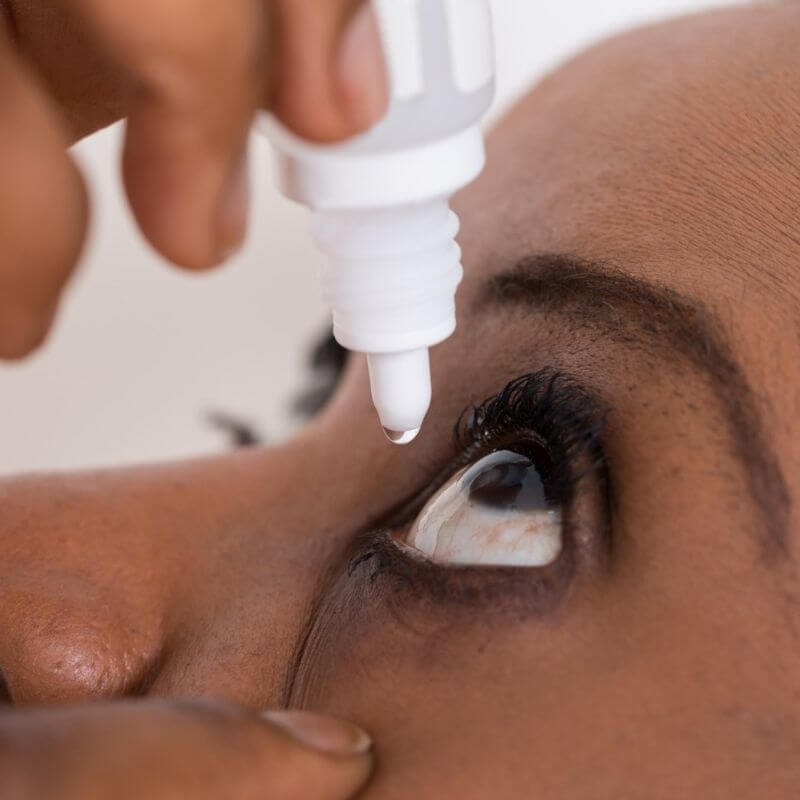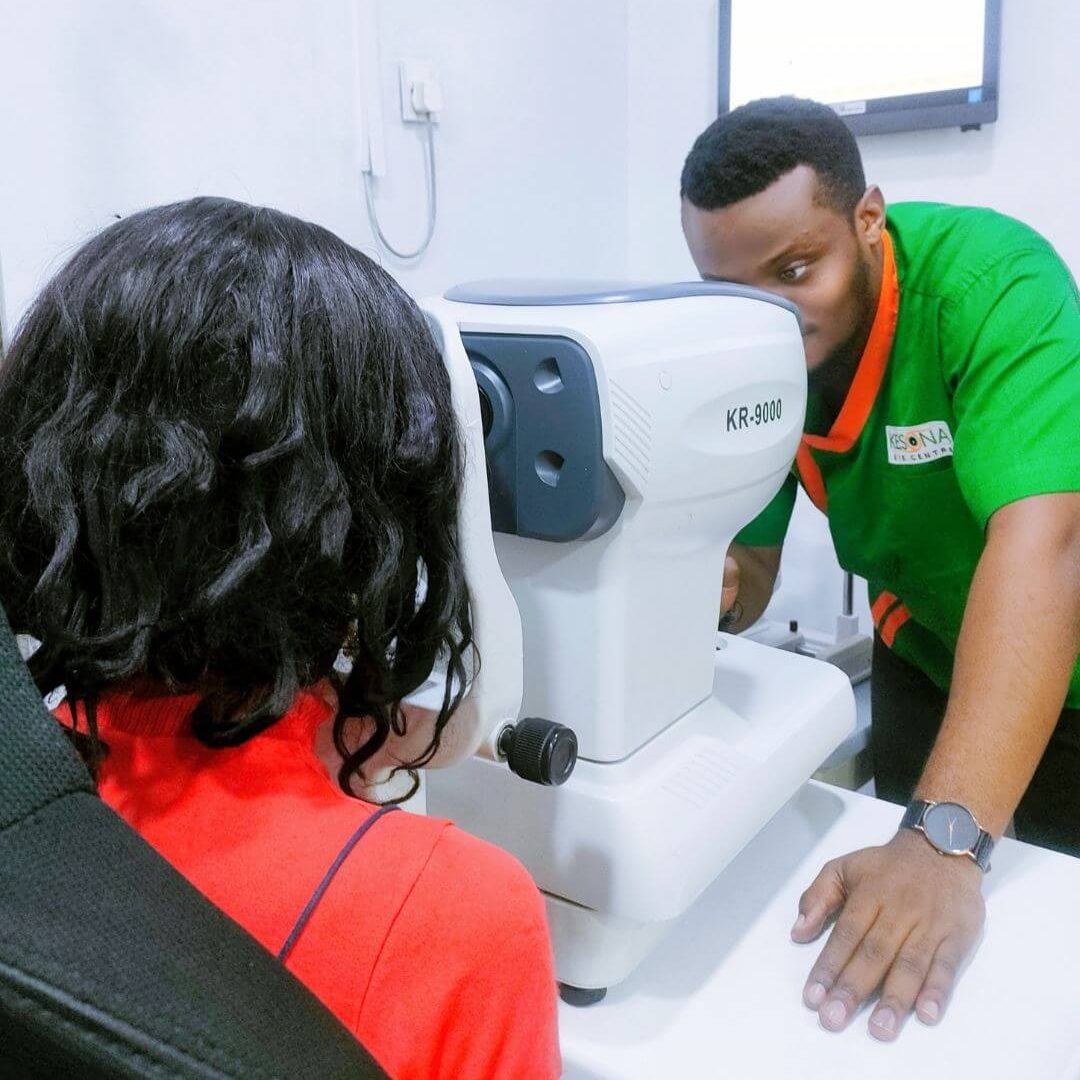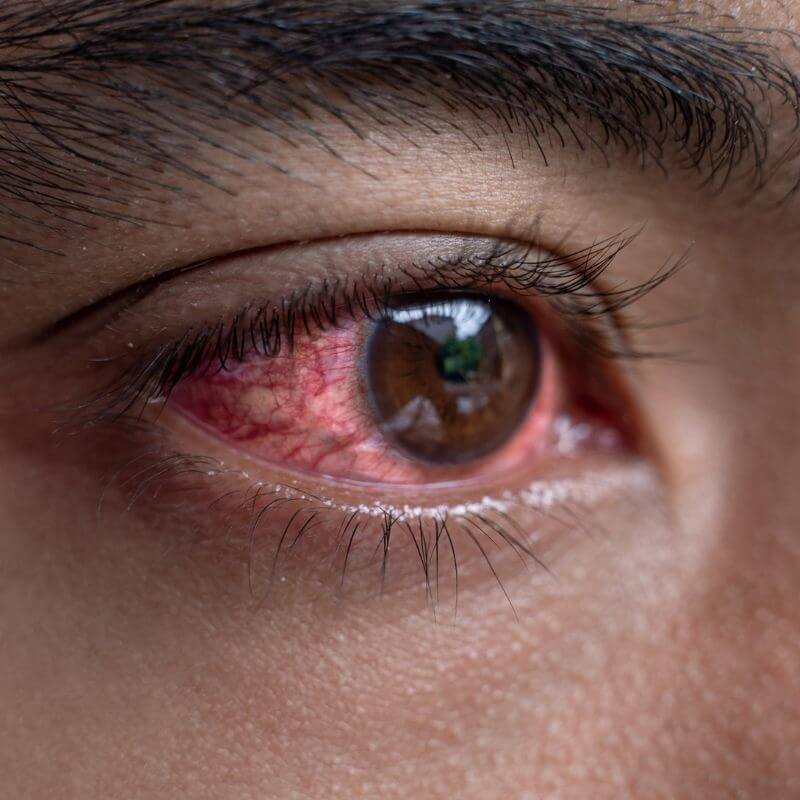Many people know there are different types of eyeglass lenses but often don’t know which is best for them.
We have shared below the common ones we recommend and when they are recommended. Read on to learn.
Lenses are transparent optical devices that change the movement of light passing through them to make vision clear and/or more comfortable
Lenses fitted into a frame that can be worn in front of the face are called eyeglass lenses.
We recommend eyeglass lenses to;
- Improve vision and relieve discomfort from refractive, eye focusing and coordination problems like myopia, hyperopia, astigmatism presbyopia, binocular vision disorders, etc
- To protect the eyes and avoid discomfort from digital screen glare, light sensitivity and other eye hazards
We have classified the types of eyeglass lenses into 3 groups for easy understanding. The groups are not mutually exclusive, so a patient can be recommended a pair of eyeglass lenses that fall into the 3 groups namely;
- Eyeglass lenses for vision correction
- Eyeglass lenses according to lens materials
- Eyeglass lenses for eye protection
Eyeglass lenses for vision correction
Single vision lenses
These lenses have only one power in them. They are suitable for people who need a single lens power to see well at all distances (like young patients with myopia, hyperopia and astigmatism) or who want to improve their vision for only one distance (like some presbyopia patients).
Bifocals
These lenses have two powers in them. These two lens powers are separated by a visible or invisible horizontal curve or line. The top part of the lens is for viewing objects at a far distance while the lower part is used to read or look at objects nearby.
These lenses are suitable for people who need two different lens powers to see far and near objects clearly (e.g. presbyopia patients)
Varifocals
These are eyeglass lenses with multiple powers, with no lines separating them the powers. They are also known as multifocal lenses or progressive lenses.
They are suitable for people who need multiple lens powers to see objects at all distances (far, intermediate and near) clearly (e.g. presbyopia patients).
Eyeglass lens type according to materials
Regular plastic lenses
These lenses are made with CR-39 plastic material. They are widely available, cheaper than other lens materials and preferred by most people. They are lighter and less likely to break compared to glass. However, they are thicker than other types of plastic lenses. The higher the lens prescription, the thicker the lenses. So, they are more suitable for low to moderate lens prescriptions.
Impact resistant lenses
These lenses are made with shatterproof materials. The common ones are polycarbonate and trivex lenses. They are thinner and lighter than regular plastic lenses but cost more than them. They provide 100% UV protection. So, no additional coating or photo treatment is required to get UV protection from them. Due to their impact-resistant nature, they are suitable for children and adults who are often exposed to hazards that can cause lens breakage.
High index lenses
These lenses are made with (high-index) plastics that bend light more efficiently than regular plastic lenses. So they can are able correct more refractive errors without being bulky. They are the thinnest and lightest of all lens materials and so are suitable for high lens prescriptions.
Eyeglass lenses for eye protection
These are non-prescription or vision correction lenses that have been coated or treated to enhance the lenses and protect the eyes from hazards like screen glare and sun radiation.
Anti-reflective lenses
These lenses have an anti-reflective coating that minimizes reflections on the surfaces of lenses, thereby allowing more light to pass through them. This reduces glare and makes vision clearer and more comfortable. So, they are recommended to minimize light/glare sensitivity due to light reflections. As a minimum recommendation, all eyeglasses worn in front of your digital screens should have this coating.
Antiblue lenses
These are a higher grade of antireflective lenses. In addition to minimizing light reflections, they filter off a portion of the blue light wavelength which can cause blue light sensitivity and disrupt the sleep cycle when digital devices are used at night. They are to minimize digital screen glare, blue light sensitivity and sleep disruptions.
Photochromic lenses
These are light-adaptive lenses. They have some elements embedded in them that are clear indoors but on exposure to the sun/UV rays undergo a chemical process that makes the lenses darken. The extent of darkening depends on the amount of UV radiation the lenses get exposed to. The more UV radiation, the darker the lenses and vice versa. After spending some time outside, when you go back indoors with the darkened lenses, the elements embedded in them reverse the chemical process, and the lenses gradually become clear again.
They are recommended to minimize light sensitivity and glare both indoors and under the sun. With an anti-reflective coating and blue light filters, they serve as all-in-one light protection glasses for people who spend time in front of digital devices and outdoors.
UV protection lenses
These are lenses that protect the eyes by blocking UV radiation. They either have in-built UV protection properties or are treated/coated to provide UV protection.
They are recommended for people who spend a lot of time in the sun and are often combined with other coatings to ensure full protection against harmful/uncomfortable light
To get a pair of eyeglasses lenses, visit our clinic. For enquiries call or chat with us on 09134343630. Click here for more options on how to reach us.


